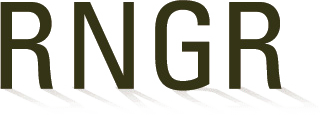
Agoseris (grandiflora)
|
Ann DeBolt Botanist Idaho Botanical Garden 2355 Old Penitentiary Road Boise, Idaho 83712 2085778137 ann@idahobotanicalgarden.org www.idahobotanicalgarden.org |
|
| Family Scientific Name: | Asteraceae | ||
|---|---|---|---|
| Family Common Name: | Sunflower Family | ||
| Scientific Name: | Agoseris grandiflora (Nutt.) Greene. | ||
| Common Synonym: | Troximon grandiflorum Nutt. | ||
| Common Name: | Bigflower Agoseris | ||
| Species Code: | AGGR | ||
| Ecotype: | BLM, Seeds of Success: near campground on Mann Creek, northwest of Weiser, Washington County, Idaho. 2,800 feet/853 m elevation. | ||
| General Distribution: | Agoseris grandiflora grows in many different habitats in Idaho, northern Nevada, northern Utah, western Montana, California, Oregon, Washington, and British Columbia. | ||
| Known Invasiveness: | None. | ||
| Propagation Goal: | plants | ||
| Propagation Method: | seed | ||
| ProductType: | Container (plug) | ||
| Stock Type: | 2.875 inch x 5.5 inch plant band (container) | ||
| Time To Grow: | 6 Months | ||
| Target Specifications: | Height: N/A Caliper: N/A Root System: Firm plug in container | ||
| Propagule Collection: | Seed was hand collected on June 30 and July 6, 2010. Mature seed (a dark brown achene) was easily removed from seed heads and placed directly into large paper bags, taking care to minimize dispersal into the wind. A small piece of No-Pest Strip was placed in each bag for 2-3 days to reduce insect predation. Seed was air dried in paper bags at room temperature. | ||
| Propagule Processing: | Seed was sent to the Bend Seed Extractory for cleaning. According to Nita Rauch, Bend Seed Extractory Manager: The seed lot was processed using a small brush machine (mantle #32, speed 1, medium bristle brushes), then hand sieved using a #40 USGS screen, and finally the Office Clipper (screensize and air flow level unknown). Different cleaning equipment would have been used if the seed lot had been larger (ie. small or large brush machine or Missoula dewinger). Seed fill was 87% (determined by X-ray), with 99% purity and 404,000 seeds/lb. | ||
| Pre-Planting Treatments: | Seed was stored at room temperature in a dark location prior to sowing. No treatment was applied. | ||
| Growing Area Preparation/ Annual Practices for Perennial Crops: |
Sowing Method: Seed was sown directly into containers (5 seeds/container) on March 22. Soil was a 2:1:5 mix of lava fines, perlite, and Sunshine Mix #4. Seed was sown ¬ inch deep and covered with 1/8 inch layer of chicken grit. Containers were hand watered and placed outside. No fertilizer was added to soil mix. | ||
| Establishment Phase: | By April 3 (12 days later), 90% of the seed had germinated. Seedlings were divided and transplanted to individual containers three weeks later. Transplant survival averaged 99%. Multiple seedlings were left in a small subset of containers, as they were too intertwined to separate. | ||
| Length of Establishment Phase: | About 1 month | ||
| Active Growth Phase: | Containers were allowed to dry slightly between hand waterings. A weak fish emulsion fertilizer was applied twice a month from April through June. Plants were grown outside until outplanting in early October. | ||
| Length of Active Growth Phase: | 5 months | ||
| Other Comments: | Plants were not permitted to flower while in the nursery. Flower stalks were removed as soon as they were observed. | ||
| References: | Intermountain Flora: Vascular Plants of the Intermountain West, U.S.A., Vol. 5, Asterales. Cronquist, A., A.H. Holmgren, N.H. Holmgren, J.L. Reveal , P.K. Holmgren. The New York Botanical Garden, Bronx, NY. 1994. | ||
Citation:
DeBolt, Ann M.; Barrash, Kris. 2013. Propagation protocol for production of Container (plug) Agoseris grandiflora (Nutt.) Greene. plants 2.875 inch x 5.5 inch plant band (container); Idaho Botanical Garden Boise, Idaho. In: Native Plant Network. URL: https://NativePlantNetwork.org (accessed 2025/09/15). US Department of Agriculture, Forest Service, National Center for Reforestation, Nurseries, and Genetic Resources.



